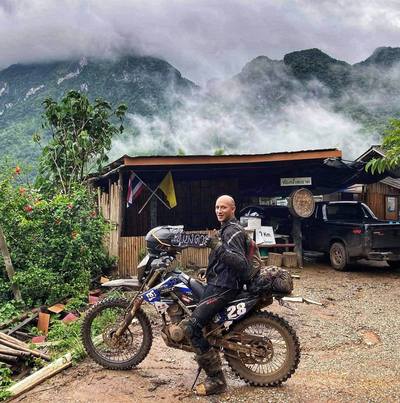Picture a serene morning commute on Interstate 95. A driver checks their mirrors and signals and smoothly changes lanes. While seemingly insignificant, this simple action sets off a chain reaction affecting dozens of vehicles behind them. Every driver's decisions on modern highways create ripples that influence traffic patterns, safety conditions, and the overall flow of vehicles for miles ahead.
The interconnected nature of highway traffic presents a fascinating study of cause and effect. Recent traffic studies reveal that a single driver's actions can influence traffic patterns up to 20 miles behind them. This phenomenon, known as the traffic wave theory, demonstrates how individual choices on the road create far-reaching consequences for highway safety and efficiency.
The Traffic Wave Theory
Traffic waves, also known as phantom traffic jams, emerge from subtle changes in driving patterns. These mysterious slowdowns often occur without visible cause, leaving drivers puzzled about their origin.
The science behind these traffic waves reveals an intricate dance of human behavior and physics.
Consider the accordion effect: when one vehicle slows slightly, the following driver must brake more forcefully to maintain a safe distance. Each subsequent driver must brake even harder, creating a wave of deceleration that ripples backward through traffic. This cascade effect can transform a minor speed adjustment into a complete standstill miles behind the initial event.
Research from the University of Michigan Transportation Research Institute demonstrates how small speed variations amplify across multiple vehicles. A mere 3-mph reduction in speed can result in a 20-mph decrease several miles back. These waves move backward through dense traffic at approximately 12 mph, creating patterns researchers can predict and measure.
The Critical Role of Vehicle Lighting

Modern vehicles rely heavily on light signals to communicate between drivers. This silent language of brake lights, turn signals, and hazard warnings forms the backbone of highway safety communication. The reaction chain triggered by brake lights illustrates this perfectly—one illuminated brake light can prompt dozens of vehicles to slow down in sequence.
Communication Through Lights
Turn signals play a crucial role in traffic flow management. Studies show that proper signal use reduces collision risks by 44%.
When drivers consistently indicate their intentions, they create predictable patterns that allow others to adjust smoothly. Hazard lights serve as universal warning signals, alerting drivers to potential dangers and prompting increased caution.
Preventive Lighting Practices
Daytime running lights have revolutionized road safety, reducing daytime accidents by up to 10% in many countries. These constant illumination systems increase vehicle visibility and provide crucial reaction time for other drivers. Proper headlight use becomes even more critical in varying conditions, where visibility challenges can multiply the impact of poor lighting choices. Integrating advanced lighting systems, such as Feniex lights, adds an extra layer of safety for vehicles operating in high-risk environments or during emergency response situations.
The psychology behind light signals reveals fascinating patterns in human behavior. Driver response times vary significantly based on signal color and intensity. Red brake lights trigger faster reactions than amber turn signals, while emergency vehicles' flashing lights create immediate response patterns in surrounding traffic. This heightened response to emergency lighting demonstrates why professional-grade warning systems have become increasingly important in modern traffic safety protocols.
Common Driver Decisions That Create Ripple Effects

Sudden Lane Changes
Abrupt lane changes are among the most disruptive actions on highways. When drivers suddenly switch lanes, they force adjacent traffic to adjust speed and position. This creates a domino effect of reactions, often spanning multiple lanes and affecting dozens of vehicles. The timing of signals during lane changes can either mitigate or amplify these disruptions.
Speed Inconsistencies
Random braking patterns create some of the most challenging traffic situations. When drivers frequently alternate between acceleration and braking, they generate waves of speed variation propagating through traffic. This unstable flow pattern increases fuel consumption and raises accident risks for all affected vehicles.
Merging Behaviors
The art of merging significantly impacts traffic flow efficiency. Early merging versus late merging presents different advantages depending on traffic density. The zipper merge method, when executed properly, can reduce congestion by up to 40% in heavy traffic situations. However, its success depends on driver cooperation and proper signal communication.
The Time-Space Impact
Traffic disturbances can persist for hours after the initial event. Studies tracking traffic patterns show that a single incident's effects may continue affecting traffic flow long after the original driver has left the highway. The geographic reach of these actions often surprises researchers, with impacts measured dozens of miles from the source.
Mathematical models help traffic engineers understand these patterns. They can use complex algorithms to predict how different driving behaviors will affect traffic flow under various conditions. Real-world examples from major metropolitan areas provide valuable data for improving traffic management strategies.
Positive Ripple Effects
Strategic gap maintenance between vehicles creates stable traffic patterns that benefit everyone. When drivers maintain consistent spaces and speeds, they generate positive ripple effects that smooth traffic flow. This "traffic calming" effect can spread through highway systems, creating stable, efficient movement zones.
Technology and Traffic Flow

Modern vehicle safety systems have transformed highway driving. Advanced driver assistance systems (ADAS) help maintain consistent speeds and safe following distances.
Smart highway systems use real-time data to adjust speed limits and merge patterns, optimizing network traffic flow.
Advanced Lighting Systems
Adaptive headlights that respond to steering input and road conditions represent a significant advance in safety technology.
Smart brake lights that indicate emergency braking situations help prevent rear-end collisions. Emergency brake warning systems communicate potential hazards to surrounding vehicles, creating additional safety margins.
Best Practices for Responsible Highway Driving
Maintaining consistent speed is one of the most important factors in highway safety. Proper following distance, typically three seconds under good conditions, provides crucial reaction time for unexpected situations. Strategic lane selection helps minimize the need for frequent changes, reducing disruption to traffic flow.
The Collective Impact
The economic costs of traffic disruption reach billions annually in lost productivity and excess fuel consumption. Environmental impacts include increased emissions from stop-and-go traffic patterns. Stress and road rage incidents often stem from traffic disruptions, creating additional safety hazards.
Weather and Lighting Conditions
Dawn and dusk present unique challenges for drivers, requiring extra attention to lighting and visibility. Severe weather protocols become essential during challenging conditions, where proper light usage can mean the difference between safety and danger. Seasonal lighting adjustments help drivers adapt to changing daylight patterns throughout the year.
Conclusion
Individual driving decisions carry far-reaching consequences for highway safety and efficiency. Understanding these impacts helps drivers make better choices that benefit everyone on the road. By maintaining proper lighting practices, following safety protocols, and considering the ripple effects of their actions, drivers can contribute to safer, more efficient highways.
ABOUT THE AUTHOR
Olivia Poglianich
Content Strategist
Olivia Poglianich is a nomadic brand strategist and copywriter in the motorcycling and adventure space who has worked with brands such as Visa, Disney and Grey Goose. Her writing has taken her all over the world, from a Serbian music festival to a Malaysian art and culture event. Olivia is a graduate of Cornell University and is often writing or reading about travel, hospitality, the start-up ecosystem or career coaching. Her latest interests are at the intersection of web3 and communal living, both on and offline.






